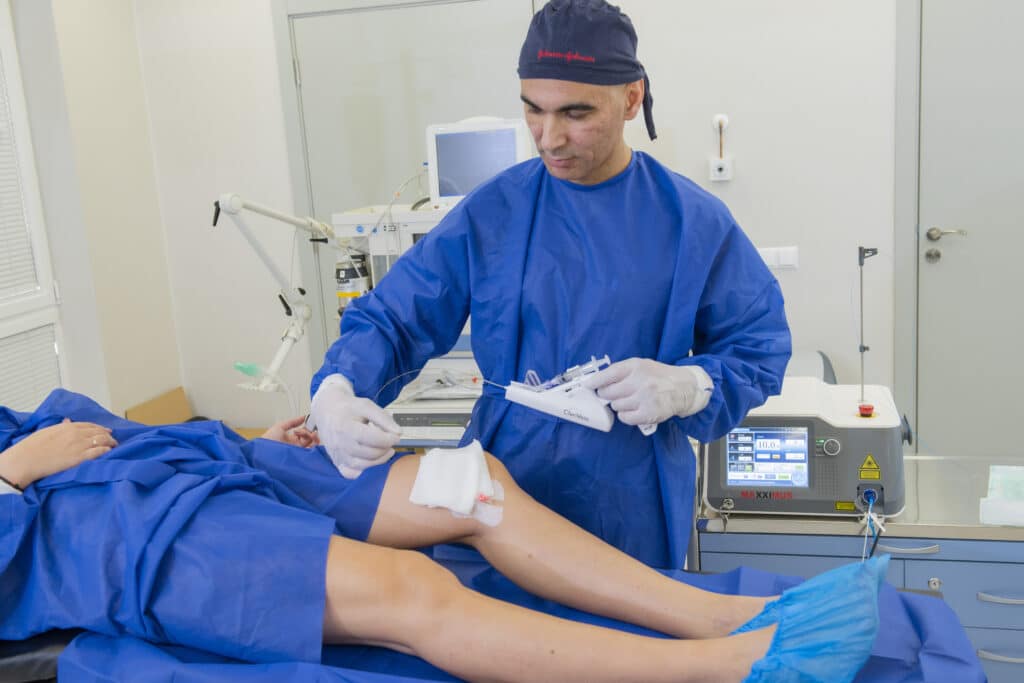Venous diseases
Thrombophlebitis
what is thrombophlebitis?
Thrombophlebitis is an inflammatory process that causes a blood clot to form and block one or more veins, usually in your legs. The affected vein may be near the surface of your skin (superficial thrombophlebitis) or deep in the muscle (deep vein thrombosis or DVT). Causes include trauma, surgery, or prolonged immobilization.
what are the symptoms?
Superficial signs and symptoms of thrombophlebitis include:
- Warmth, burning and pain in the affected area
- Redness and swelling
Signs and symptoms of deep vein thromboses include:
- pain
- swelling
What are the reasons?
The cause of thrombophlebitis is a blood clot that can form in your blood as a result of:
- Injury of a vein
- Hereditary bleeding disorder
- immobilisation for a long period, for example during a stay in hospital

Risk factors
The risk of thrombophlebitis increases if:
You are inactive for an extended period, either because you are in bed or traveling in a car or plane for a long time
Have varicose veins, which are a common cause of superficial thrombophlebitis
Using birth control pills or hormone replacement therapy, which can make it more likely that your blood will clot
Pregnancy or recent childbirth;
Presence of pacemaker;
You have had thrombophlebitis before
Stroke suffered
You are over 60
Overweight or obese;
Cancer.
Complications
The risk of thrombophlebitis increases if:
Pulmonary embolism
If part of a deep vein clot breaks off, it can reach your lungs, where it can block an artery (embolism) and become potentially life-threatening.
Postphlebitic syndrome
This condition, also known as post-thrombotic syndrome, can develop months or even years after you’ve had DVT. Post phlebitis syndrome can cause lasting pain, swelling and a feeling of heaviness in the affected крак.
Diagnostics
In order to diagnose thrombophlebitis, you will be given a thorough examination along with the accompanying tests:
Echo-Doppler.
This test can confirm the diagnosis and differentiate between superficial and deep vein thrombosis.
Blood test.
D-dimer examination. While the D-dimer test is inconclusive, it may indicate the need for further investigation.
It is also useful for ruling out DVT and for identifying people at risk of developing thrombophlebitis:
– CT scan;
• MRI;
– Ultrasound examination.
Treatment
For superficial thrombophlebitis, it is advisable to apply heat to the painful area, elevate the affected leg, use a non-steroidal anti-inflammatory drug and possibly wear compression stockings. The condition usually improves on its own.
After an examination and consultation, a comprehensive treatment plan will be drawn up for you.
